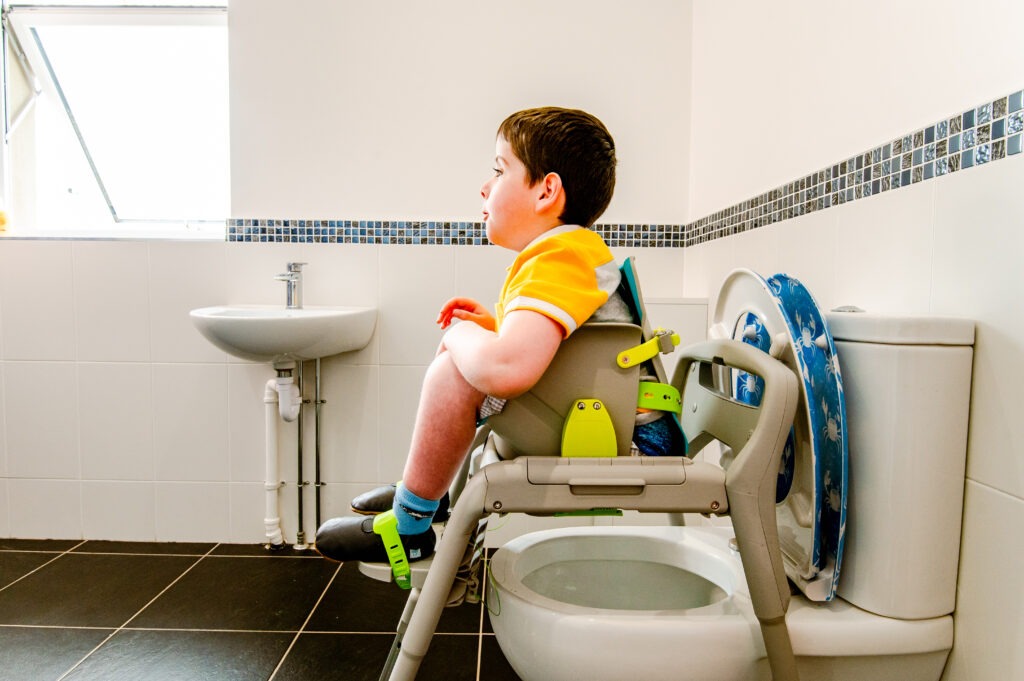In this guest blog, the Clinical Director behind the innovative GottaGo toilet seat, Dr Laura Finney PhD, looks into the health benefits of squatting and toileting health.
This post is promoted content by Firefly GottaGo, on behalf of Leckey.
We are all familiar with the squat posture being a great lower body exercise to target quads, hamstrings, glutes and calves. But what about squatting for function?
Some years ago, I spent time in rural Asia and was amazed at how common it was to see people of all ages squatting. As the squat posture is rarely seen in Ireland, (except by young children and perhaps at the gym), I was fascinated. From cooking to chatting, working to relaxing, squatting was the go-to posture for many activities. That included using the toilet.
A little reading on the topic revealed that the Western raised toilet is a relatively modern invention. Initially adopted by kings and queens, a raised toilet also suited the invention of the U-bend, Therefore, so sitting on the toilet as opposed to squatting gradually became the norm for most of us. Now, many years later, it is widely recognised within the healthcare community that the squat posture is the healthiest way to pee and poo (see National Institute for Clinical Excellence guidelines).

The link between squatting and toileting function
For me, the subject simmered in the background for some years until a unique opportunity arose for the development of a new supportive toileting seat for children. It was time to do some deeper research. I learnt about the function of the puborectalis muscle, part of the pelvic floor, which wraps around the rectum like an elastic band. This muscle, which is in a constant state of tonic contraction helps to maintain continence when we stand, lie and even sit. To be technical, it pulls the anal canal forward toward the pubis, thus maintaining a sharp angle in the rectum. That is until we squat. When squatting the muscle relaxes and the rectum straightens which lets gravity do the work for us.
Squatting also enables the thighs to put gentle pressure on the abdomen. Research indicates that people who squat report less straining and take less time to go (Sikirov, 2003). Other studies have shown that adopting a squat position when pooing lowers abdominal pressure, suggesting this position requires less effort for bowel emptying (Tashiro et al, 2020). A fascinating new study (Garcia-Fernandez and Emanuel Petros, 2020) has demonstrated a positive link between squatting-based exercises and reducing daytime and night-time incontinence in children.
An additional bonus of the squat posture is that it stretches the muscles around the hip joint. Adductor magnus and the proximal hamstrings (both of which are often shortened and tight in children with neurological impairment) along with the erector spinae of the lower back and gluteus maximus.
Assistance with squatting
We know that due to reduced mobility and compounding neurological issues, children with additional needs (such as cerebral palsy) frequently have chronic constipation. Their trunk control – which is linked to abdominal and pelvic control (Talu, 2018) – is often poor and slower to develop. This may cause patterns of incontinence to set in early which may be difficult to shift. Where this is coupled with low expectations by family, education or healthcare professionals, children will not be supported to reach their potential.
But it does not need to be like this.
The squat posture can stretch tight muscles, reduce straining, and assist natural physiological function. This can promote toilet training success, which will have a positive impact on activity, participation, and quality of life for both the child and the family. Now there is a child-sized product to support the functional posture of squatting and toileting, there is only question that remains. When are adults going to catch up?
– Dr Laura Finney PhD
This post is promoted content by Firefly GottaGo, on behalf of Leckey.
References
- https://www.nice.org.uk/guidance/cg49/chapter/1-Guidance
- Sikirov, D. Comparison of Straining During Defecation in Three Positions: Results and Implications for Human Health. Dig Dis Sci 48, 1201–1205 (2003). https://doi.org/10.1023/A:1024180319005
- Tashiro, Daisuke & Nakahara, Masami & Kitajima, Eiji & Haraguchi, Kenzo. (2020). The effects of a defecation posture, supported by the upper limbs, on respiratory function. Journal of Physical Therapy Science. 32. 332-336. 10.1589/jpts.32.332.
- Garcia-Fernandez, A. and Emanuel Petros, P. 2020. A four-month squatting-based pelvic exercise regime cures day/night enuresis and bowel dysfunction in children aged 7–11 years. Central European Journal of Urology, 73 (3), pp. 307-314.
- Talu, B. 2018. Determine the Relationship Between Abdominal Muscle Strength, Trunk Control and Urinary Incontinence in Children with Diplegic Cerebral Palsy. Urology Journal, 15 (4), pp. 180-185.
More advice on constipation
Are you concerned that you or someone else may be constipated? Speak to a healthcare professional (GP, school nurse or health visitor) for advice.
Bladder & Bowel UK publish a quarterly e-newsletter, which is full of interesting articles, suggestions and information for people affected by bladder and bowel conditions. To receive the newsletter please send an email to bbuk@disabledliving.co.uk, You can find out more on our newsletters page.



Comments are closed